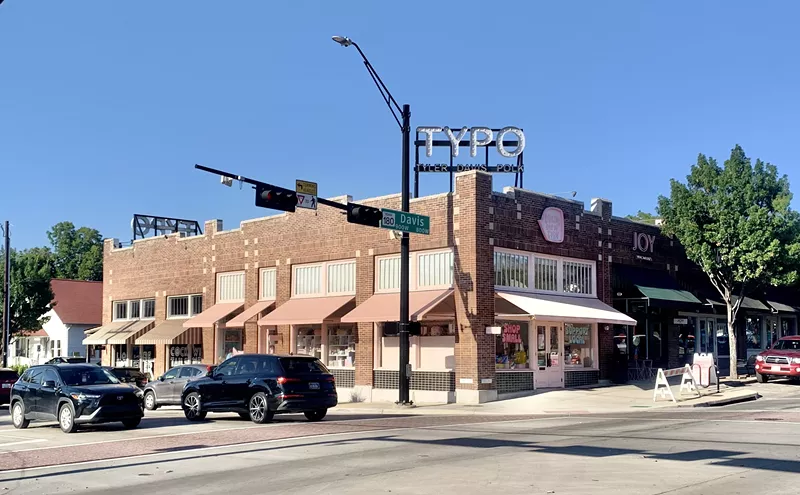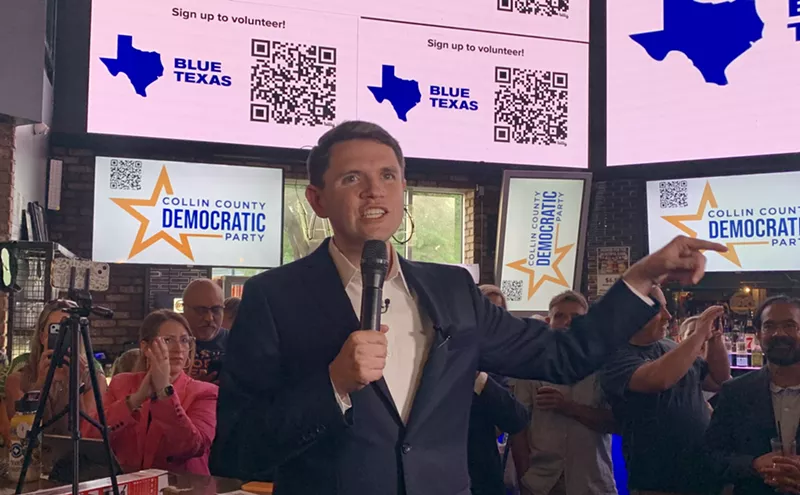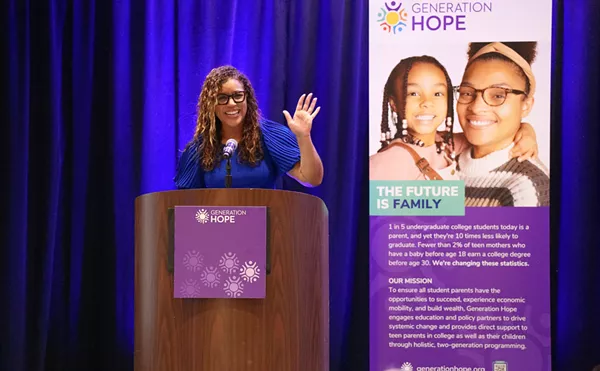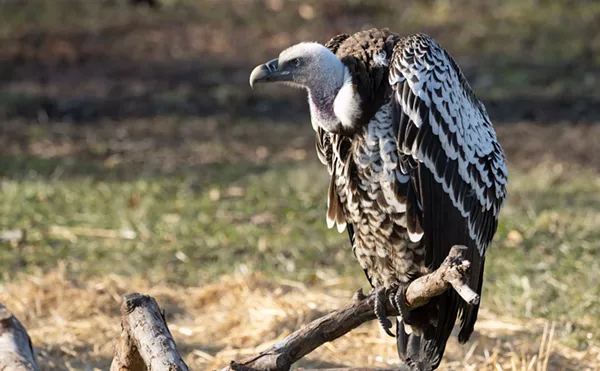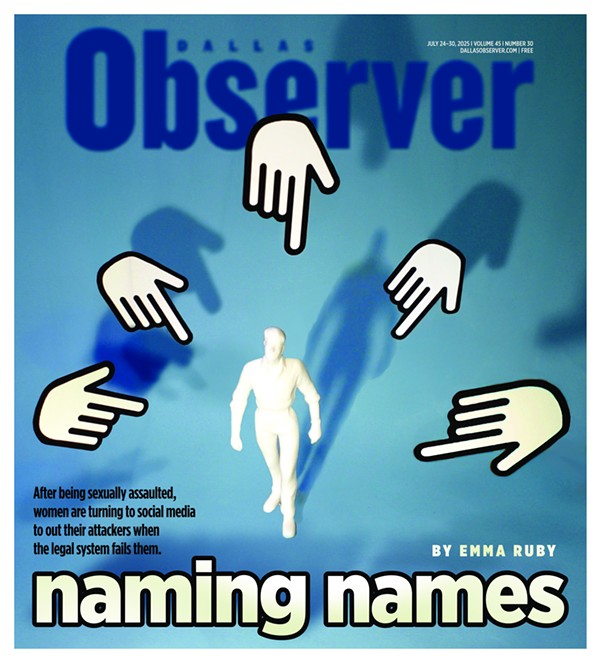Sampson, a bull-riding world champion, was in Sao Paulo that summer to host a three-day riding clinic. On day one, he and his interpreter sat in the stands of an empty 9,000-seat arena. The nation's expansive, uninterrupted ranch country is a fine place to breed rank bulls and the people who ride them. As Sampson looked on, he thought there were some potential pros in the bunch. Then Adriano's turn came. Sampson's interpreter leaned in.
"This is the guy I was talking about," he said.
Adriano took his time over the bull. Made sure his gloved hand had a firm grip on the rope. Dug in his heels. And then he nodded his head and the chute flew open.
Brazilian bulls are different from American bulls. Brazilian bulls tend to hop; they don't spin as much when they buck. They don't duck and dive. So the Brazilian bull riders Sampson came to teach, about 20 in all, rode straight up--that is, with their chests out, their free hand raring back. Sampson told his students if they wanted to make it in America, they'd have to learn to hunch their backs over their bulls, "stay out" over them, as Sampson said, because American bulls will spin, belly roll, duck, dive, kick, hop--do anything short of killing you to get you off, and sometimes even that.
But the riders had trouble with this new technique. They hit dirt almost as soon as the gate opened. Yet when Adriano's gate popped open, three seconds passed...four...Adriano's chest was close to parallel with the bull's back; the kid looked steady over him...six seconds...seven...eight.
"He was a natural," Sampson says today from upstate New York, where he lives. "What I like to say is, he was already a good bull rider. I saw where he was going to be a great bull rider."
What's most revealing about Adriano Moraes happened next. Three days later, at a rodeo, before the bull-riding event Sampson was to judge, he looked to the pen that held the bulls and saw a cowboy with a crowd gathering around him. It was Adriano. He pulled them close and showed the cowboys who missed the clinic how to stay out over a bull. Showed those who made the clinic how to improve their form. And these were the people he'd soon compete against.
Today, Adriano lives in Keller and has a family of six, but little else has changed. He's still, at 34, one of the greatest riders ever to straddle a bull's back. He's the first to win two Professional Bull Riders Inc. world championships--world championships that truly are global: Cowboys from Australia, Canada, Mexico and the United States compete annually. He's one of three cowboys to ride all 10 bulls at the National Finals Rodeo, the year-end event of the Professional Rodeo Cowboys Association (PRCA), the league against which the PBR competes. "He's definitely a legend," says Ty Murray, the "King of the Cowboys," a seven-time PRCA all-around world champion who's now the president of the PBR. "I'll match Adriano in his prime against any bull rider of any time in their prime." Last year Adriano rode 67 percent of his bulls on the PBR Tour, nine points better than the next closest competitor, 21-year-old Mike Lee.
And Moraes still has the energy of a 21-year-old. To see him at a bull-riding event is to see him on the move. This bull rider needs a rope fastened; that one could use some encouragement. There's a corporate sponsor who'd like a word over there. A reporter needing a quote over here.
Then there's all that he does for his brothers, literal and otherwise. First, for his kin, Andre and Allan Moraes, both of whom ride bulls on the PBR circuit, Adriano provides whatever they need. He helped secure visas, PBR cards (it's the only league the brothers ride in now; the money's better), apartments in the Fort Worth suburbs near Adriano's home, cars, clothing, "everything," Allan says through an interpreter, the interpreter himself a man for whom Adriano helped secure a job when he moved to Fort Worth.
Then there are Adriano's figurative brothers, the ones he talked into moving to the United States. These guys ride bulls, too. Paulo Crimber, Ednei Caminhas, Guilherme Marchi, Rogerio Ferreira--all of them owing something, if not everything, to Adriano. He worked as Caminhas' interpreter for the media. He's finding Crimber a doctor for his pregnant wife. Last month, Adriano worried over four young bull riders who had moved to the United States without Adriano's knowledge.
"I'll have to help them," Adriano told his wife, Flavia, once he heard they were Stateside.
"No," she said. "They didn't tell us when they could come."
Recalling the conversation, Flavia shakes her head. "But he likes to do it," she says.
All of the Brazilians live in the Dallas-Fort Worth area, and all receive the riding wisdom of Adriano. This, perhaps more than his own achievements, could be Adriano Moraes' legacy: the lessons he's taught the others. Because they're all elite riders.
In 2002 Caminhas had enough points to claim the PBR championship before the finals started. In 2004 the Moraes brothers became the first trio to qualify for the PBR finals. Crimber was one of two cowboys to ride his first five bulls there last year--before breaking his riding hand. Two months later, with the hand still injured, he won the bull-riding competition at the PRCA's National Finals Rodeo.
"Oh, I know there's a lot more dissension toward [the Brazilians]," says Lee Aiken, a black cowboy on the PBR Tour. "But I think it has more to do with jealousy. I think the fact that when they've come over in the past, they've kind of dominated--I think it has more to do with that than that they're actually Brazilian. I think some of the guys are intimidated by their hunger. They come over here, you know, intent on winning every time...For a while, it was getting to some of the [Anglos]. They didn't like it."
They'd better get used to it. There are 18 Brazilians currently found throughout bull riding's professional ranks, Caminhas says, some in the sport's minor leagues. To see these 18 in action is to see the influence of Adriano Moraes and, maybe, the future of professional bull riding.
It's a dangerous sport, growing more dangerous with each passing year. On the Built Ford Tough Series, the elite series of the PBR, one out of every 15 rides now ends in injury, says Dr. Tandy Freeman, director of medical services for the league. This despite the bulletproof vest bull riders wear and the face masks and helmets an increasing number favor. One out of every 15 rides. That's three injuries for each day of competition. (The BFTS consists of 45 bull riders, who some argue are the best in the world.) At a PBR rodeo in Oklahoma City last month, six cowboys didn't compete. The worst off was Corey Melton, a 22-year-old from Keithville, Louisiana. He suffered a collapsed lung at the National Finals Rodeo in December. He hopes to ride again in May.
Any injury report, though, however gruesome it may be, doesn't tell the whole truth: that a lot of guys ride through their injuries. Justin McBride rode last year with a broken ankle. Adriano has ridden two years with a torn ACL. Crimber rides with a right hand so swollen, he offers his left when greeting visitors. Big money's out there--the PBR world champ gets a $1 million bonus--but it's available only to those who ride. If you can manage the pain for eight seconds a day, the thinking goes, you can ignore surgery.
"My job really isn't to recommend anything but to educate a guy about what's wrong and what the risks are," Freeman says. The choice, after that, is each bull rider's. Still, "It never ceases to amaze me what these guys are able to do," he says. Freeman's served as the trainer for the Dallas Mavericks and the Dallas Freeze, a minor league hockey team. "Bull riders are the toughest professional athletes out there," he says. "They do things I couldn't imagine doing."
The PBR openly markets the attrition of its stars. A video montage of the worst rib-breaking, concussion-causing spills plays on the Jumbotron before each BFTS event. And the PBR is sure to include in every promo it airs on NBC--NBC carrying eight BFTS Tour stops this year--a few shots of cowboys crashing hard into the dirt.
"People get hooked on the action they see," says Sean Gleason, chief operation officer for the PBR. "The drama. The danger. They like the crashes...But television doesn't really do it justice."
He's right. It's almost pornographic, the violence one sees in person at a PBR event. How very raw it all is. How unfiltered by camera frames or soothing commentators. How small these men look, from ground level, on the backs of the frothing, kicking beast. How easily they're tossed once they lose their grip. And tossed without discrimination. In Oklahoma City, bulls threw two cowboys head first into the gates enclosing the arena. They each hit with a sick slap that sucked the breath out of the crowd. Both men, somehow, walked away.
"Bulls have the advantage today," says Cody Lambert, the vice president of PBR and the man who chooses which bulls to run at which event. "The riders aren't that different from 30 years ago. But the bulls are."
Bulls today are bred to buck, much as Thoroughbred horses are bred to race. The rise of the bred bucking bull coincides with the rise of the PBR.
In 1992, Lambert, Ty Murray and 18 other cowboys decided to break from the Professional Rodeo Cowboys Association and form their own league, a league whose sole event would be bull riding. (Bull riding had long been the top draw at rodeos, and Murray and company thought it time for proper compensation.) The league they formed, the Professional Bull Riders Inc., promised the best bull riders on the best bulls. To get the riders, the 20 cowboys sought out sponsorships that would drive up tournament winnings. To get the bulls, they found the few stock contractors that had bred former world champions. (Most bulls, even 10 years ago, were pulled from ranches and, if they could buck worth a damn, included in rodeos.) As prize money went up, so did the sport's notoriety, which drew more attention to the bulls it featured, which got more people involved with breeding bulls for the exclusive purpose of bucking off riders.
By the new millennium, even the man who wrote Elton John's hits, Bernie Taupin, had invested in bucking bulls. "At our first finals [in 1994], we tried to find 100 bulls that you could score an 80 or better on," Lambert says. "Well, now, if you can't score 80 points on them, they're not good enough for our regular-season events." Last year, the PBR opened a registry called The American Bucking Bull Inc. to see how many beasts were out there. The PBR hoped to register 5,000 bulls. It instead registered 11,000.
"A bull today can be worth $100,000 or more," Lambert says. Taupin's bull, Little Yellow Jacket, a three-time world champion, is worth an estimated $250,000. A straw of bucking-bull semen can draw up to $1,000, and that's with no guarantee of fertilization.
Stock contractors, in short, are paid good money today to create bulls with a high disdain for anything that happens upon their backs.
"We view the sport as having two athletes in every ride," Sean Gleason says.
To keep up, cowboys train more than in years past. They stretch more, do more abdominal workouts, find more martial arts regimens. But that doesn't shore up a cowboy's courage. He most often turns to God for that.
A deep faith has always run through this sport. And although a bull-riding locker room is filled with cuss words and empty beer bottles, out in the ring, God is on the lips of all who enter. The Brazilians are as religious as anyone. Ednei Caminhas is a regular at the PBR's Bible studies. Adriano, his brothers and Paulo Crimber attend Mass every day. Even on the road. Even on a gray Saturday afternoon in Oklahoma City, in the hotel room of a priest visiting from Boston. Eight Brazilians are here to worship. Adriano reads from the Bible in Portuguese and translates what the visiting priest says. Before concluding the service, the holy man asks God to grant every bull rider strength for tonight's event.
Never a bad thing to ask God for in this line of work.
Though soccer remains the sport of choice in Brazil, once you get outside the nation's metropolises, once the radio starts playing Alan Jackson and Garth Brooks, a rodeo is never far away. The biggest is in Barretos, an 11-day event more festival than rodeo--with the agriculture shows and nightly concerts, as many as 900,000 people attend. Adriano Moraes was born the second of five children, in Quintana, about four hours from Barretos. His father, Aparecido, managed a farm, and it was not long before Adriano, his brothers and one sister were in a field, picking tomatoes. They picked more for sustenance than profit.
Adriano rode a horse to school. Despite the cowboy culture everywhere Adriano looked, he was 16 before he took in a rodeo. One year later, a friend persuaded him to get on a bull. He loved the rush and by year's end was riding for money. At his third rodeo, he finished second and received nine times what he made as a tractor driver on his father's farm.
Soon after, he dropped out of school, against his parents' wishes, and made his way in Brazil's rodeo circuits.
He was 19 and at a competition in Mateo, Sao Paulo, when he saw a young woman in the stands with delicate features, sun-kissed skin and dark hair. After the event, she got in her car and made to leave, but Adriano cut her off. He asked her for a date. Three months later, Flavia and Adriano were married.
In 1992, one year after Charlie Sampson held his Brazilian bull-riding clinic, he invited Adriano and Flavia to Las Vegas and the PRCA's National Finals Rodeo. "This is a bull-riding son of a gun," Sampson kept saying to any cowboy who would listen.
"What did he say?" Adriano kept asking Flavia, who was translating for him.
"He was like a kid in a candy store," Sampson recalls.
Yes, it excited Adriano to meet the Americans he'd heard so much about, but he spent a lot of time in Vegas studying the bulls. He had to smile looking at them. They weren't any tougher than the ones back home.
He wanted to compete, but it took two years and two Brazilian championships before Adriano secured a sponsorship in 1994 to ride in the United States. Once here, he dominated. By the end of the year, Adriano had won the inaugural PBR world championship and the PRCA's National Finals Rodeo. The king of both pro circuits. Not bad, Ty Murray says, for a guy who ordered what Murray did at restaurants because he couldn't read the menu. (Not bad, either, for a guy who competed against Murray.)
Shortly thereafter, Adriano and Flavia moved back to the ranch he owned in Brazil. Adriano spent the rest of the '90s flying to events here and returning home the next day. "Adriano thinks nothing of commuting," says Bob Feist, a ringside announcer for the PBR. In the '90s, "He was just back and forth on 12-, 14-hour flights."
But it didn't affect his riding. He won the National Finals Rodeo again in 1996, but broke his leg in 1997. Then re-broke it in 1998.
In August, while he recuperated in Brazil, Adriano went to the rodeo in Barretos, which draws cowboys from America, Canada and Australia, and there he met Paulo Crimber, an 18-year-old kid, short and skinny, with a propensity to ride any bull you could place him on.
Crimber finished second, good enough for a spot at the PBR championship in Columbus, Ohio, three months later. But he didn't know if he wanted to go. He had never visited the United States, much less ridden there.
"You have to go," Adriano told him. The money, he said, was three times what Crimber could make in Brazil. Adriano offered to put him up with friends in Fort Worth.
And with that, the Brazilian migration started.
Though Crimber didn't place in Columbus, by 2000 he was competing in earnest in the United States. So, too, was Ednei Caminhas. And Rogerio Ferreira. They were the first of the Brazilian transplants to do well in the elite circuit, the first to learn from Adriano, who was more than willing to teach. By 2000 Ferreira had won a PBR elite tour event and more than $140,000 in prize money. Crimber, the youngest of the bunch by five years, won $40,000 at a November event in Madison Square Garden. Caminhas, then 25 and a native of Sao Paulo, won the most. He finished the year with $202,573 in prize money.
In 2001 Adriano found a home in Keller and moved his wife and two boys there. He was sick of flying. He then beckoned his brother, Andre Moraes, to the United States to compete in the PBR.
And so began the Brazilians' days of dominance. Adriano won the 2001 PBR world championship, the first man to claim the title twice. Crimber won what is, in essence, the PBR's Triple-A minor league championship in 2001. The following year, Caminhas won the PBR world title, and Andre Moraes finished 2002 ranked seventh in the PBR.
Though they dominated, the newcomers were still dependent. Caminhas needed Adriano only for translations, but Crimber was homesick. Andre Moraes couldn't find an apartment or a car on his own. Neither could youngest brother Allan, who came to America a couple of years later.
And Adriano's responsibilities didn't end there. He was an active member for a religious lay community in Brazil. In 2002 a woman from Brazil came forward saying her 12-year-old son was his. The relationship was from before he met Flavia, but the allegation was true. A son he didn't know, living half a continent away. Oh, and by the way, Flavia was expecting again--their third.
When the 2003 season got under way, "I was stressed out," Adriano says. "I was lost."
And so began Adriano Moraes' worst professional year.
"We just couldn't figure it out," PBR announcer Feist says. "Was he over the hill? What was happening?"
Flavia offers a simple answer: "It's hard to be responsible for 10 Brazilians."
But Adriano says that wasn't it, either. "My life was out of order," he says.
His Catholicism had always been his first priority. But as Adriano struggled in 2003--he placed in only six of the 28 Tour stops--he focused more of his attention on his bull riding, less on his faith. The more he struggled in the ring, the more emphasis he placed on improving there, and the more upset he got when he didn't.
"I was depressed," he says. He thought about retirement. He concedes that he wasn't the best father or husband that year. "My priorities were wrong."
But, truth be told, it wasn't an easy year physically. He tore his ACL in 2003 and opted against surgery. Might that have affected his...
"Nope, nope, nope," he says. His problems were "mental."
It took the new year, and the resolutions attending it, for Adriano to shake himself free. No longer would faith go overlooked as bull riding clamored for attention; nor would the needs of his wife, nor those of his children--here or in Brazil.
"Faith, wife, family, bull riding--in that order," Adriano says.
Funny, once bull riding was the least of his priorities, Adriano excelled at it. He won the second event of the year at Worcester, Massachusetts, with a final-round score of 91. Won again in Atlanta six weeks later. Won in St. Louis two weeks after that. By season's end, Adriano had ridden 67 percent of his bulls, a Tour best. He'd also taken on another Brazilian, Guilherme Marchi, who settled--where else?--near Adriano. Begun a term on the PBR's board of directors. And he stood a good chance of claiming his third PBR world championship.
But in the second round of the finals, he felt the muscles of his left bicep pop five seconds into his ride on Coyote Ugly, a world-renowned bull. He held on till the horn sounded but walked away wondering if he would ride again--he could feel the muscles curl up toward his shoulder.
Dr. Freeman told him his left bicep had detached from the bone. OK, Adriano said. Could he ride?
Well, he would need surgery, the doctor said. But if he wanted to compete, he couldn't do any more damage to his bicep than was already done. It would be a matter of managing the pain, Freeman said.
Something Adriano thought he could do.
In the fourth round he drew Crossfire Hurricane, a bull that had bucked off all comers in 2004. It was not a fun ride. Toward the end, Adriano nearly fell over the front of the bull and had to use his bicep to stay on. After he dismounted, he dropped to his knees in the arena. The judges scored the ride a 93, the best score of the fourth round.
But a third title wasn't to be. Mike Lee, the 21-year-old who'd finished the season second to Adriano in points, rode seven of eight bulls in Vegas. Adriano rode only four.
But Paulo Crimber was one of two cowboys to ride his first five bulls. And Adriano and his brothers became the first trio to qualify for a world championship. And Ednei Caminhas overcame injury to win $130,000 on the season. And Guilherme Marchi rode nearly half his bulls in his first year on tour.
And 10 years after one Brazilian finished in the top 45 of the PBR, five Brazilians were there.
This is a defining moment. Everyone knows it. All the Brazilians gather around Adriano. There's Ednei Caminhas, who rode just three bulls ago. He's rushed back to see Adriano's attempt but stays a few feet from the other Brazilians, reserved even now. (It took Jody Newberry, Caminhas' best friend on Tour, five months to learn Caminhas could speak English well. He just chooses to keep quiet around a lot of people.)
There's Paulo Crimber, with an ice pack on his swollen riding hand, standing on the walkway behind Adriano's chute. He has the charisma to be the next Adriano: He ends each conversation with a wink, and after each successful ride, he does a dance that can only be described as cowboy hip-hop. And Crimber obviously has the talent. It's just staying healthy long enough to inherit the throne.
Allan Moraes stands next to Crimber. The youngest of the Moraes brothers, he attended Mass this afternoon in his pajamas. He looks as though he'll one day outgrow the extra pounds he carries.
Andre Moraes, his build as unassuming as his personality, is nearly squished in the effort to prepare his older brother for his ride.
Guilherme Marchi comes into tonight with a 73 percent riding average for 2005, improving on a rather impressive rookie season. He keeps quiet as Crimber and the others shout encouragement.
As does Rogerio Ferreira. Tomorrow afternoon, he will be the only Brazilian to make it to the championship round of the Express PBR Classic in Oklahoma City.
Adriano Moraes closes his eyes and breathes. Beneath him is Coyote Ugly, the bull that three months ago tore Adriano's bicep from the bone. After the season, when Dr. Freeman operated on Adriano, he found tendons so shredded, nothing could be fixed. He pulled the muscle to its full length and, as he says, "kind of tacked it down." But the muscle is not connected to the bone.
Adriano hasn't ridden Coyote Ugly since his injury. The moment is significant enough to draw Ty Murray from wherever the PBR president sits during an event. Murray ambles up the walkway and peeks between Brazilian shoulders.
Seconds later, Adriano nods his head. The gate flies open.
And Adriano's bucked off. The ride lasts less than two seconds. "What in the world happened there?" the announcer asks. But perhaps the better question is "What in the world does this mean?" Is retirement far off? And if not, who will be the next great Brazilian bull rider?
Adriano's told Crimber when he retires--perhaps years from now, perhaps not: Adriano's never been one to plan ahead--that Crimber has the skill and personality to be a legend.
But the rider Adriano really likes is one he saw last December, when he was home for Christmas. To hear Adriano talk about this cowboy is to hear Charlie Sampson talk about a young Adriano. Even some of the language is the same. The bull rider in Brazil is 25 years old, but boy does he have great technique, boy can he "ride like a son of a gun," Adriano says. He's already persuaded him to come to the United States. Not surprisingly, Adriano's helping to get the papers processed.



